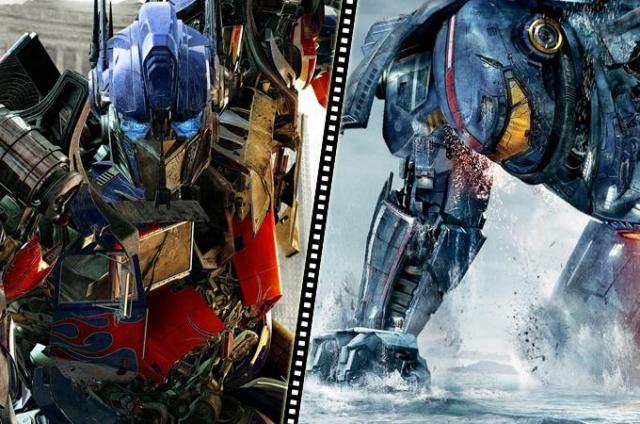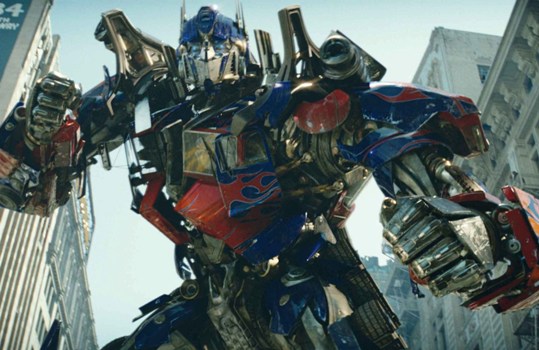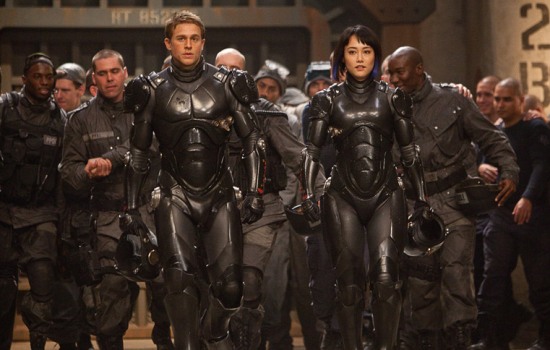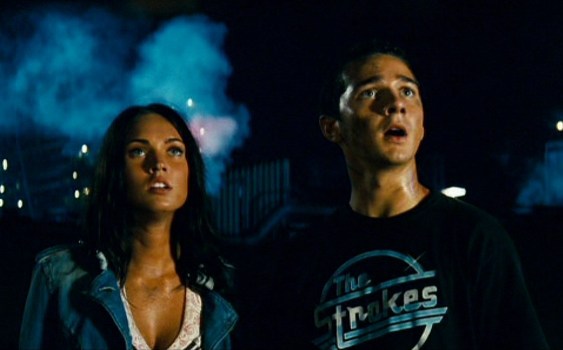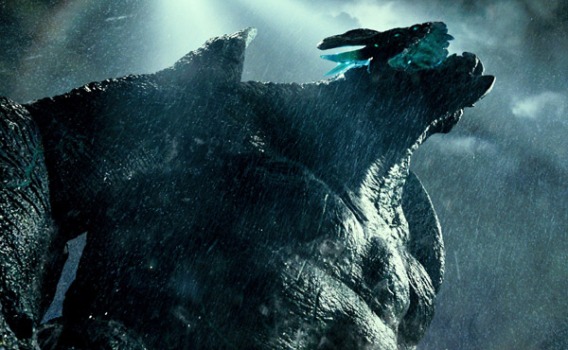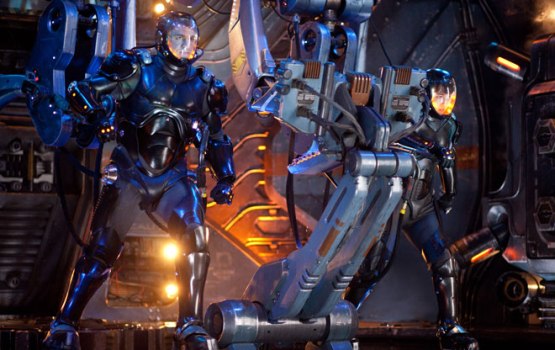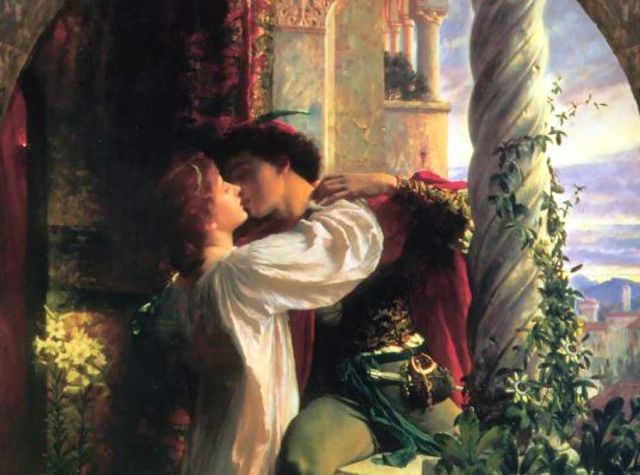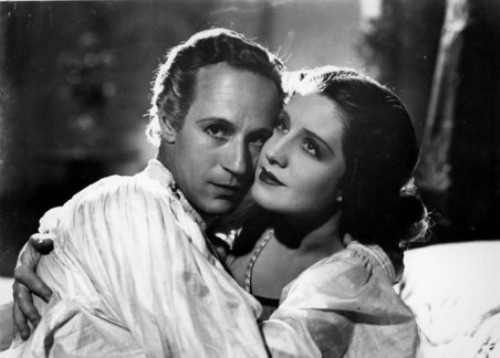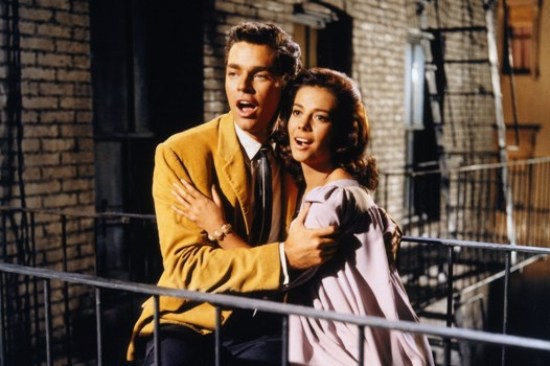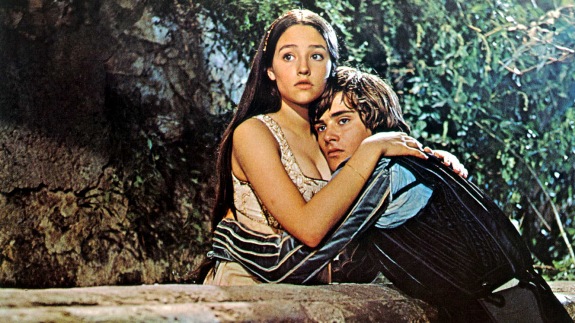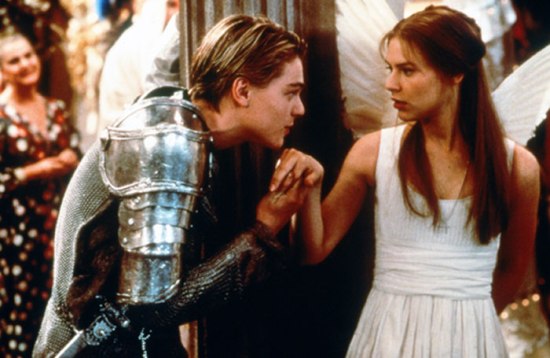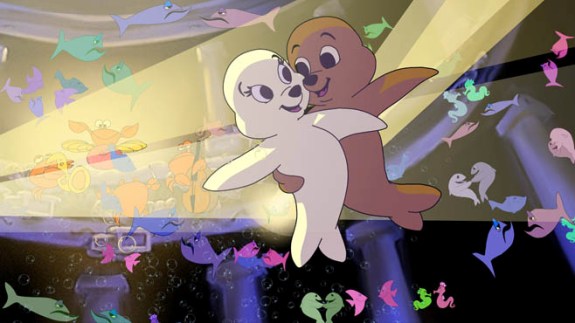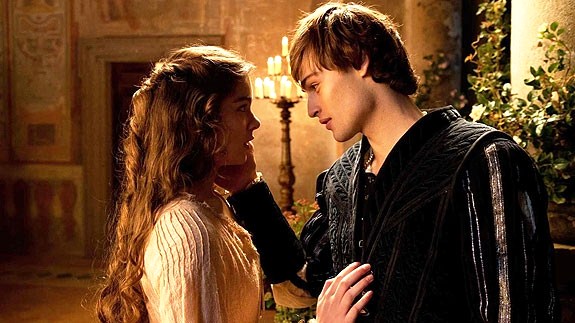Finding a franchise that not only hits the jackpot once but many times is usually hard to find in Hollywood, let alone sustain. The subjects on which you can build these franchises can also be just as unpredictable. I’m sure Hollywood never believed that movies centered around giant robots would ever become a multi-billion dollar juggernaut in the worldwide box-office, but that’s what they found out when Michael Bay’s Transformers (2007) made it to the big screen. Transformers, for better or worse (mostly worse), has become one of the most successful franchises in recent memory, with three of the entries from the series making it past the billion dollar mark in worldwide grosses. But, even with all the success it has achieved, it has it’s fair share of detractors, who certainly have justifiable complaints about the bloated and insipid movies in the series. Though Transformers has it’s many faults, there’s no denying that they’ve made an impact on the industry, including opening the door for many other like minded action films. Most of them have been even more ridiculous knockoffs like Hasbro Studios Battleship (2012), which was nothing more than a $200 million game commercial. But among all the bad movies in Transformers wake, one that did stand out was Guillermo del Toro’s Pacific Rim (2013). Like Transformers, Pacific Rim involves great battle set pieces set in our real world with giant robots. But, there was one thing that del Toro’s movie got that Bay’s film didn’t; critical praise. On the surface, these two films should be received almost exactly the same. So why is one more highly regarded than the other. In this article, I’m going to look at how the two movies shape up against one another, and see where this disparagement comes from.
To understand these movies, one also has to look at their influences, and how well they are used to back up both the action in each movie as well as the story. For the most part, the most obvious influences for both franchises comes from Japanese pop culture; particularly with regards to the embodiment of the samurai warrior and the mythologies around giant kaiju monsters. The Transformers we know now started off as a toy line in the early to mid eighties, which spawned a popular Saturday morning cartoon series which ran from 1984 to 1987 and culminated in a theatrical animated film. Though conceived and developed in America, most of the animation was completed in Japan and South Korea, and was always meant to appeal to audiences from both sides of the Pacific. Much of the Japanese influence comes out of the sense of duty from the Transformers themselves, not unlike the warriors code of the samurai, as well as with the aesthetic look of the characters themselves. One look at characters like Optimus Prime and Megatron, and you can see the influence of feudal Japanese armor in their design. This is coupled with the gigantic size of the characters and how their constant skirmishes wreck havoc in our world. That’s where the Kaiju influence comes about in the series, which is the same kind of inspiration that Guillermo del Toro draws from. Kaiju monsters have long been a part of Japanese literature and cinema; including the highly influential Godzilla series. With Pacific Rim, del Toro put his own fresh spin on the material, delivering a mash-up of all these different influences, but with a narrative that stands well enough on it’s own. And like Transformers, it takes these very culturally distinct aspects and makes them work towards a worldwide sensibility. In that sense, both do an equally fine job of presenting their influences well in their selective stories.
“Autobots, roll out.”
Where the two movies ultimately part ways, at least in the effectiveness of the story-telling, is in their executions. Primarily, it all has to do with the intents of their selective filmmakers. Michael Bay is very style oriented, choosing to highlight the camera work and visual effects of his movies above the plot and character development. Guillermo del Toro concerns himself with the opposite, devoting much of his movie to character interactions as well as building the world in which they live in. That’s not to say that del Toro’s movies are not without style either; it’s just that sometimes the plot moves along so briskly that you hardly even notice the creative designs that del Toro has added. But, if you look at the movies separated from their respective filmmakers, you would almost think that they were crafted by the same people. So, what makes Transformers so loathsome and Pacific Rim so enriching? The difference comes from the self-awareness that is found in each film. Guillermo fills his movie with cheesy dialogue and flat characterizations, but he did that by design. These are staples of many often unintentionally funny and campy sci-fi thrillers, and Guillermo is celebrating that aspect by making it an essential part of his own movie. Michael Bay’s film on the other hand uses the same kind of cheesy dialogue and stale characterizations, but it seems to be the result of neglect rather than intent. Because Bay spends so much time building the look of his movies, the things that matter most like plot and characters seem to be forgotten. Instead, plot convenience and character archetypes are in place instead of real, meaningful development. Not to mention a lot of pointless filler, like most of the stuff with the insufferable Witwicky parents.
The lack of development is one of the things that I have found most problematic with the Transformers franchise. The series seems to have no thrust behind it, because Michael Bay never tries to explore something new in each entry. Watching them all together (which I don’t recommend) it is astonishing how very little differences there are with the the plots. It’s just the same movie done over and over again. What’s even more infuriating is the fact that with every rehashed plot, they introduce brand new characters and then never address them ever again in the follow-up. Hence, why so many of the characters are superfluous in the Transformers series. But, to compare this aspect of the movies with Pacific Rim is a little unfair, mainly because Transformers has seen four releases in the franchise, compared to Pacific Rim’s one (though a sequel is on the way in 2017). So, let’s just compare how the story holds up in it’s initial outing; the original 2007 movie, which is by default the best one as well. What Michael Bay got right in his first film easily was the look of the movie; making a surprisingly gritty take on a Saturday morning cartoon work out beautifully. For a movie based around such a simple premise, he managed to set the world up effectively, making it believable that giant robots from space could find themselves at war on our planet. But, by minimizing the emotional development of the characters and the complexity of the plot, Transformers also feels remarkably minor in the grand scheme of things, and no amount of visual scale and scope can hide that. Pacific Rim on the other hand, presents the global ramifications of it’s world much more effectively. We see the destruction of the Kaiju and the toll it puts on our heroes; the ones who pilot the giant robot suits called Jaegers.
“Now we have a choice here; we either sit and wait, or we take these flare guns and do something really stupid.”
For the most part, Pacific Rim stands ahead of Transformers purely because it treats it audience intelligently, rather than pandering to them. Guillermo del Toro knows that if he puts conviction behind the silliness of his movie, the audience will feel rewarded for having witnessed a creative experience. Michael Bay just takes moves from his own playbook, and transplants that into anything he desires. Michael Bay is a talented director, but directing skills alone doesn’t make a movie watchable. Anyone can get good at shooting during “magic hour” or capturing different angles of a controlled explosion; but in the end that means little unless it elevates the story. Michael Bay seems to think that his style can carry any story along, regardless if it’s good or not. Now, to be fair to the man, it is a plan that has indeed paid off for him over the years. His movies are huge money-makers and that’s primarily because they are easy to digest action thrillers; simplistic and not challenging to follow. The casual viewer doesn’t mind what’s lacking in story, and indeed they’re the one’s who drive Bay’s films to huge box-office numbers. And, even though it’s a rough pill to swallow, Pacific Rim would not exist today if it weren’t for Transformers. That movie’s success is what got del Toro’s movie green-lit, so really it stands on the foundation that Bay cemented first. But, after seeing something that delivers the same kind of action, but with a degree of clever creativity behind it like Pacific Rim, we can clearly see that Guillermo del Toro is trying to cook us up a gourmet dinner while Michael Bay is serving us just more Happy Meals. Bay could honestly do better and has done so too. When given a better script to work with, he can actually deliver a worthwhile film, like 1996’s The Rock, 2005’s The Island, or even 2013’s Pain and Gain. Why he can’t put that kind of focus into what is arguably his biggest claim to fame is beyond me.
“At the end of this day, one shall stand, one shall fall.”
Focus is primarily what is lacking all the Transformers movies, even in the less problematic first film. What is most infuriating is the way that the movies actually push aside the characters that matter most, namely the Transformers themselves, in favor of characters that nobody likes. This should be problematic for any fans of the original cartoon series, seeing as how their beloved characters have been reduced to supporting characters. Michael Bay does deserve credit for preserving actor Peter Cullen as the voice of Optimus Prime (something which he’s done from the very beginning), but the fact that he’s sidelined so that we can have more scenes of douchebaggery from the series’ very unlikable protagonist Sam Witwicky (Shia LaBeouf) is a big mark against the franchise. If Sam were a more likable and interesting character, there would be no issue, but given that his presence is so pervasive and in place of character development for the ACTUAL TRANSFORMERS, it’s just another sign of Michael Bay’s lack of focus and concern for what’s best for the series. Compare that to the characters in Pacific Rim. They are cliched and simplistic, but are given enough screen time to become sympathetic as well. Guillermo del Toro doesn’t try to force his characters into slap-sticky situations or have them deliver cocky, one-liners. Letting the characters breathe allows for those things to come through naturally. That’s why we cheer when Idris Elba’s Stacker Pentacost delivers his rousing speech, even though on paper it sounds ridiculous, as with the intentionally campy scientist characters played by Charlie Day and Burn Gorman. Devote attention to the characters in the end, and the audience will warm to them. Try to force characterizations like Transformers‘ Sam’s unwarranted cockiness, and you’ve got characters worthy of scorn.
Even the lack of focus on the visuals can hurt a movie, and with all the visual flair that Michael Bay can cook up, he still manages to undermine his movie with too much style. The first film in the Transformers series is a bit more focused than the others, but what I found to be problematic is the frenetic nature of the editing and camera work. Michael Bay loves to move the camera around, which is fine for a kinetically charged action scene, but problematic for everything else. The animation of the Transformers, in particular, is indeed impressive, with hundreds of individually moving parts. Unfortunately, any time the movie gets close to showing us all the intricacies of the CG artists hard work, Michael Bay chooses to hide it with some of his stylish film-making. I don’t understand why he keeps distracting the viewer when it’s not needed. Did he really not have the confidence in the visual effects team to give them the showcase they were calling for? It becomes more annoying in the later films, that remarkably feel even less focused despite their longer running times. Pacific Rim by contrast not only gives the visuals the screen time they deserve, but at times almost indulges us in how impressive they are. I especially like the way that Guillermo del Toro presents us with scenes devoted entirely to showing off the mighty Jaeger robots. Early on in the film, we get an almost step-by-step demonstration of the Jaegers in action, which even details how the pilots are able to make the giant contraptions move; grinding gears and all. It may seem indulgent, but plot wise it’s very worthwhile, because it presents us visually with all we need to know about how this whole world works. Del Toro also holds the camera still, allowing the audience to understand what is going on even in the big action sequences. That is ultimately why it’s important to have a focus on your visuals in any given movie.
“Fortune favors the brave, dude.”
Overall, it’s unusual to see two movies that follow many of the same visual cues and same cultural influences end up with such different outcomes. Transformers is a box office phenomenon that at the same time has been blasted by critics and audiences alike. With Pacific Rim, you have a critical darling that surprisingly had to fight to get barely above $100 million domestic. And yet, by looking at the two together, you can clearly see how intent and execution really comes to play with each of the different films. It’s clear that Guillermo del Toro crafted Pacific Rim out of love for the things that he’s parodying. By contrast, Michael Bay is just exploiting an already established franchise for his own gain. Not that Michael Bay doesn’t value what he’s creating for the series; he wouldn’t have stuck with it for so long if he wasn’t enjoying the end result. But, he’s the kind of filmmaker who would take that approach to any other established intellectual property, without regard for what has come before it. Transformers just so happened to be the franchise that caught his eye at the moment. And I’m sure it won’t be the last to get the Michael Bay make-over either. We already saw Teenage Mutant Ninja Turtles become the next victim. It’s a financial situation that has worked out for Bay, but I think the lack of empathy for the direction of the series has unfortunately left a black mark on both the filmmaker and the Transformers brand. I’m sure the original creator of Optimus Prime and Megatron never expected to have their brand associated with racially insensitive stereotypes and up-skirt shots of the movie’s female leads. Transformers is a franchise in desperate need of a new vision, while Pacific Rim is one of infinite potential. Luckily del Toro’s movie has developed enough of a following to warrant a sequel, which I too am anticipating. In the end, even when it’s about giant monster fighting robots, substance still triumphs over style.
“Today we are cancelling the apocalypse!!”
